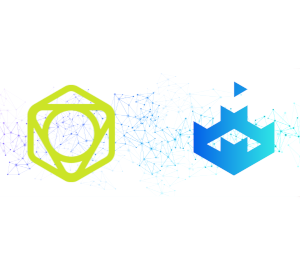Another day, another vulnerability. The thing is, vulnerabilities don’t just appear one at a time; there tend to be dozens of them. Already this year, 31,525 CVEs have been published, showing the quick rate at which new security vulnerabilities emerge.
If you’re a developer, that’s a good reason to make security a part of your everyday workflow, before one of these vulnerabilities finds its way into your code. SecureFlag is here to help with that.

What Are Security Vulnerabilities?
A security vulnerability is a weakness in an application that attackers can exploit to compromise the system. Perhaps the code isn’t secure enough, or it may have missing access controls and misconfigured environments.
Not all vulnerabilities come from code that’s written in-house. They may also be from third-party libraries, APIs, cloud service misconfigurations, or even deployment practices.
That’s what makes vulnerabilities such a broad and persistent challenge in development, as they’re not always obvious, but they’re always out there.
What’s the Difference Between a Threat and a Vulnerability?
The terms “threat” and “vulnerability” often get used interchangeably, but they’re not the same thing. A vulnerability is the weakness itself, while a threat is the potential danger that could exploit that weakness.
If your code has an SQL injection flaw, that’s the vulnerability. The attacker who tries to exploit it by injecting malicious queries is the threat. When both come together, you have a serious risk that needs immediate attention.
Understanding this distinction helps developers prioritize their security work. Mitigating vulnerabilities reduces the opportunities for threats to succeed.
How Do Security Vulnerabilities Happen?
No one writes insecure code on purpose (we hope), but vulnerabilities get in more often than most of us would like to admit. Some causes include:
-
Human error: Forgetting to validate input, hardcoding credentials, or accidentally exposing an API key in a repository.
-
Third-party dependencies: Today’s applications rely heavily on libraries and frameworks. If one of them has a known flaw, your application inherits the risk.
-
Configuration mistakes: Leaving debug modes on in production, failing to update default passwords, or granting overly broad permissions can all allow attackers to gain access.
-
Time pressure: Deadlines and release schedules sometimes mean security gets pushed to the bottom of the list, resulting in security vulnerabilities finding a way in.
These causes show why vulnerabilities continue to happen despite the growing emphasis on secure coding practices.
Security Vulnerabilities Every Developer Should Know
There are countless ways for things to go wrong, but a few types of security vulnerabilities turn up again and again. If you’ve ever looked at the OWASP Top 10, you’ll recognize some of these:
-
SQL Injection: One of the oldest and still most damaging issues. If user input isn’t sanitized, attackers can inject their own commands into database queries.
-
Cross-Site Scripting (XSS): By injecting malicious scripts into web pages, attackers can steal cookies, hijack sessions, or trick users into taking actions they didn’t intend.
-
Cross-Site Request Forgery (CSRF): Here, attackers trick users into unknowingly performing actions, such as submitting forms or transferring funds, while logged into a site.
-
Insecure Deserialization: When data objects are converted without proper checks, attackers can manipulate them to run malicious commands.
-
Misconfigurations: Simple mistakes in how applications or servers are set up often lead to serious breaches, such as exposed administrative interfaces to forgotten testing endpoints.
Why Addressing Security Vulnerabilities Is Critical
Underestimating vulnerabilities, particularly in smaller applications, can create a false sense of security. Attackers frequently use automated tools to scan the internet for exploitable systems, regardless of their size or visibility.
The consequences of a vulnerability can be massive, leading to unauthorized access to sensitive data, denial of service, reputational damage, and regulatory penalties.
From a developer’s perspective, addressing vulnerabilities early in the software development life cycle (SDLC) is a necessity.
Understanding Vulnerabilities in System Components
Vulnerabilities can show up in any component of your computer system, not just in application code. That’s because attackers are constantly looking for weaknesses in the operating system, the hardware, or the software running on top.
Even a single flaw, such as a zero-day vulnerability, can be exploited before a patch exists, making early detection and proactive security practices essential.
For example, a flaw in a web application could allow attackers to exploit XSS or CSRF, giving them a way to gain unauthorized access to sensitive data or even take control of the affected system.
These weaknesses are found at any stage, from development to deployment, and can become harmful if left unaddressed.
Security Vulnerabilities in AI Systems
We know AI has its benefits, but, unfortunately, it’s also creating new security challenges. Traditional risks such as SQL injection or insecure configurations are still relevant, along with new vulnerabilities brought about by AI models that developers should be aware of.
Below are only a few examples of AI security vulnerabilities, so it’s worth checking out OWASP’s lists for LLMs and agentic AI.
-
Prompt Injection: Attackers manipulate prompts in ways that cause the model to reveal sensitive data, execute unintended actions, or bypass safety filters.
-
Data Poisoning: If attackers can influence the training data, they can bias the model or embed hidden behaviors that only trigger under certain conditions.
-
Model Inversion Attacks: Attackers try to reconstruct sensitive training data (like personal information) from model outputs.
-
Overreliance on AI Output: Developers sometimes assume model responses are “safe” by default, but if unchecked, AI-generated content can introduce vulnerabilities elsewhere in the system.
-
Tool Misuse: In agentic AI, attackers can exploit AI agents’ integrated tools to make them perform unintended or unauthorized actions, potentially impacting systems or exposing sensitive data.
AI doesn’t remove the need for security practice, but amplifies it. AI should be treated like any other component of your system, with proper safeguards and testing.
Prevent Vulnerabilities Through Threat Modeling
Threat modeling is all about seeing your system through the eyes of an attacker. It helps anticipate where security vulnerabilities may occur, think through potential attack paths, and prioritize risks before they reach production.
It doesn’t have to be complicated; even a simple review of data flows, critical components, and trust boundaries can show where vulnerabilities are most likely to appear.
Automated threat modeling solutions, such as ThreatCanvas, make it easier to integrate threat modeling into the SDLC without slowing down the workflow.
After potential risks are outlined and prioritized, developers can take practical steps to reduce the number of vulnerabilities.
How Developers Can Reduce Security Vulnerabilities
Eliminating every vulnerability isn’t realistic, but developers can use measures that vastly reduce their impact. A few best practices include:
-
Validating and sanitizing all inputs.
-
Using parameterized queries to protect against injection attacks.
-
Keeping dependencies and frameworks updated.
-
Applying the principle of least privilege to accounts and services.
-
Managing secrets securely and avoiding hardcoded credentials.
-
Automating security testing with static analysis, dependency scanners, and CI/CD checks.
Most importantly, developers need to integrate security into their everyday work. The earlier a vulnerability is caught, the more cost-effective and easier it is to fix.
Security Awareness and Training for Development Teams
It should come as no surprise that security awareness and training are essential for development teams to mitigate threats and manage vulnerabilities.
Developers should receive ongoing education on secure coding, vulnerability management, and incident response processes. Regular training ensures that developers are aware of the latest vulnerabilities and understand how malicious actors exploit these flaws.
Providing teams with such knowledge helps organizations reduce their overall cyber risk and enables developers to identify and address security issues before they become harmful threats.
SecureFlag and the Path to Safer Code
SecureFlag helps developers turn vulnerability awareness into practical, secure coding skills. The platform provides hands-on labs and interactive learning paths that cover a wide range of security issues.
It makes a difference due to:
-
Practical experience: Developers work with realistic scenarios, learning to identify, analyze, and remediate vulnerabilities safely.
-
Coverage of traditional and AI risks: From SQL injection, XSS, and insecure deserialization to AI threats like prompt injection and data poisoning.
-
Workflow integration: Instant feedback and guidance help developers understand not just what went wrong, but how to prevent it in the future.
-
Continuous practice: Regular training creates developer skill, enabling teams to produce more secure code from the very first line.
-
Stronger organizational security: SecureFlag helps organizations manage vulnerabilities directly while encouraging a culture where security is part of everyday development.
Secure coding practices combined with interactive learning and threat modeling result in fewer vulnerabilities and the delivery of safer software.


